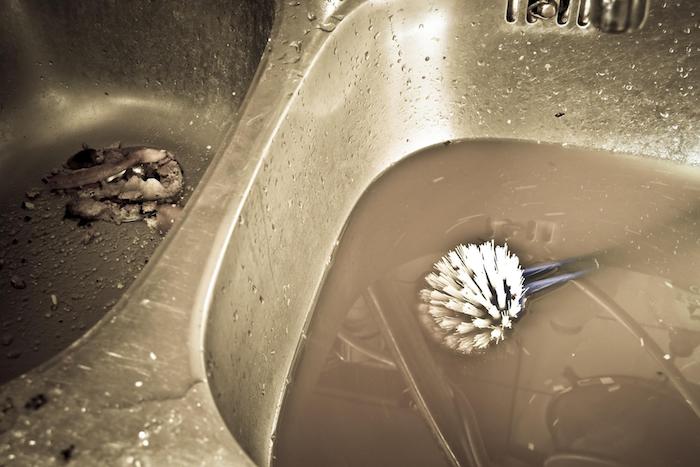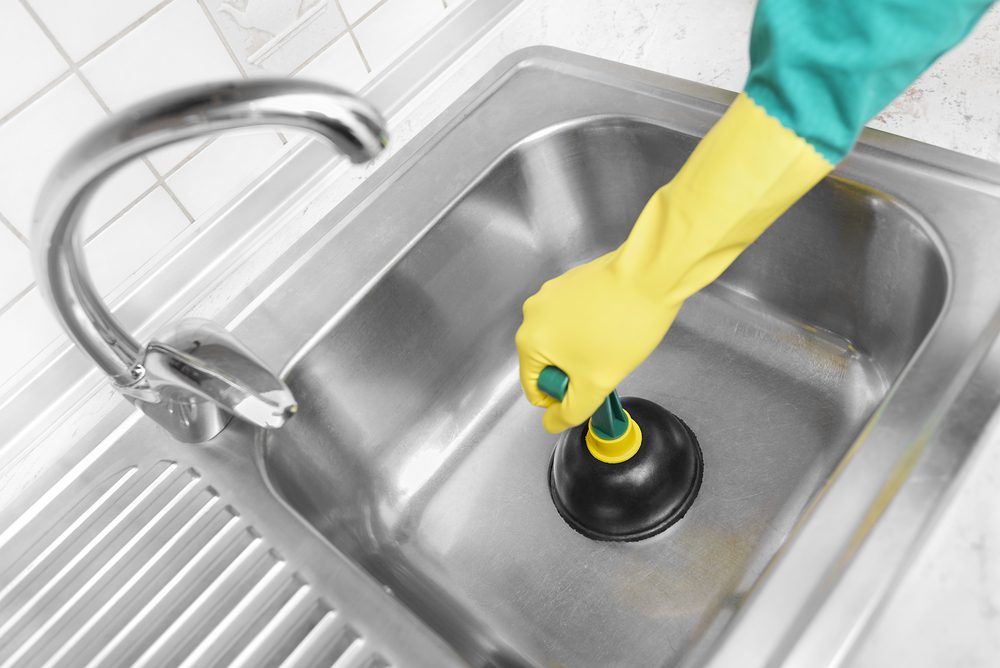Techniques To Effectively Correct A Slow-Draining Sink
Techniques To Effectively Correct A Slow-Draining Sink
Blog Article
Just about every person may have their own individual way of thinking on the subject of 7 Ways To Fix A Slow-Draining Sink Before You Call A Plumber.

Introduction
We've all been there: You're brushing your teeth or washing your hands, and you notice the water pooling in the sink. Rather than swiftly swirling away, it sticks around, transforming your once-refreshing early morning routine into a mini overload scene. A slow-draining sink isn't just irritating; it's usually an indication of larger pipes issues hiding under the surface. The good news is that many slow-draining sinks can be repaired with a little knowledge, a few basic devices, and some persistence. Ready to tackle this job head-on? Let's roll up our sleeves and dive right in.
Recognizing the Root Causes Of a Slow-Draining Sink
Before you start poking around in your pipelines, it assists to recognize what might be triggering the stagnation. Recognizing the source makes it less complicated to choose the appropriate fix.
Typical Wrongdoers Behind Slow Drainage
So, what's clogging things up? Usually, it's a blend of daily debris-- think hair, soap residue, toothpaste residue, and remaining food fragments. In time, these little bits accumulate and hold on to the pipe walls, progressively narrowing the flow and making it harder for water to go through. In some cases, mineral deposits from tough water can likewise contribute to the gunk, creating the excellent storm for stubborn obstructions.
When is it Time to Act?
If you see the water draining pipes slower than normal, it's an excellent concept to intervene quicker instead of later. Waiting too long can cause complete clogs, undesirable odors, and even pipe damage. If the water takes greater than a couple of secs to clean out after shutting off the tap, consider it a red flag and prepare to place on your DIY hat.
Devices and Products You'll Need
The right devices make all the difference. Fortunately, you will not need a completely stocked plumber's van to get the job done.
Necessary Devices for Do It Yourself Repair Works
A bettor is your best beginning point. A tiny, sink-sized bettor creates suction that can remove small obstructions. For more relentless clogs, a drainpipe serpent (often called a plumbing technician's auger) works wonders. A set of gloves, a flashlight, and perhaps a set of safety safety glasses are also convenient.
Advised Cleansing Solutions
Mild meal soap and hot water can help break down oily accumulation. A mix of baking soft drink and vinegar is a reliable natural remedy, and chemical cleansers offer an even more eco-friendly strategy. Maintain chemical drain cleansers as a last resource, as they can be rough on your pipes.
Safety And Security First: Precautions and Prep work
Before you launch into unclogging setting, consider security. You're handling potentially filthy water and debris, so slip on a pair of handwear covers. If you're making use of chemical cleaners, ensure the room is well-ventilated and follow the instructions on the label.
Protective Gear and Workspace Setup
Lay down some old towels or rags around the sink area to catch dashes. Clear away any type of products that may get in your method, like soap dispensers or toothbrush owners. See to it you have good lighting-- get a flashlight if needed.
Step-by-Step Overview to Dealing With a Slow-Draining Sink
Currently, allow's get involved in the nitty-gritty. This detailed process will assist you through easy techniques to recover your sink's drain.
Step 1: Get Rid Of and Tidy the Stopper
Often, the stopper (that tiny plug you lower to block water) is the initial perpetrator. Remove it carefully and wipe any type of hair or crud entraped around its base. Rinse it completely before putting it back in place.
Step 2: Utilize a Bettor to Remove Debris
Got that plunger ready? Placement it over the drain and offer it a few company pumps. The concept is to create suction that can loosen up any kind of obstruction. If you see littles particles drifting up, you get on the best track.
Step 3: Try a Drainpipe Serpent or Cable Wall Mount
If the bettor doesn't work, it's time to draw out the drain serpent. Delicately feed it right into the drainpipe and twist as you go. You might feel some resistance-- that's likely the clog. Keep twisting and pulling up until you remove the obstruction. If you don't have a drainpipe serpent, an aligned wire wall mount can work in a pinch.
Tip 4: Apply a Do It Yourself Drain Cleanser
A natural cleaner made from cooking soda and vinegar can break down recurring grime. Put half a cup of baking soft drink into the drainpipe, adhered to by half a cup of vinegar. Allow it fizz for around 15 minutes, after that flush with warm water. This chain reaction often does wonders for small blockages.
Tip 5: Reassemble and Examine the Sink
Placed everything back with each other and run the faucet. Does the water now swirl away at a reputable speed? If yes, provide yourself a pat on the back. Otherwise, do not despair-- there are still a few more tricks up your sleeve.
Different Methods for Stubborn Clogs
Not all clogs are created equivalent. If your sink still rejects to coordinate, consider these different services.
Baking Soda and Vinegar Approach
We already discussed this, yet it's worth keeping in mind again. This gentle, eco-friendly method is safer than chemical cleaners and commonly quite reliable.
Chemical Drain Cleaners
Enzyme-based cleansers utilize all-natural bacteria to absorb organic matter. They're an outstanding selection if you're seeking to avoid rough chemicals. Simply bear in mind, they may take a bit longer to work their magic.
Chemical Drainpipe Cleaners: Pros and Cons
Chemical cleansers can blast with difficult obstructions fast, but they're not without downsides. They can produce warmth and fumes, damages pipelines if used exceedingly, and position ecological threats. Utilize them moderately, and always comply with the instructions thoroughly.
Preventive Measures to Keep Your Sink Flowing
Prevention is the best treatment. By taking on a few straightforward behaviors, you can keep your sink from decreasing in the first place.
Regular Cleaning Behaviors
Wipe down the sink container and component area consistently. Get rid of hair or food fragments before they have a chance to wash down the drainpipe.
Avoiding Hazardous Compounds Down the Drain
Think twice before discarding coffee grounds, oil, or fibrous vegetable scraps down the sink. These perpetrators hold on to pipe wall surfaces, developing clogs with time.
Regular Upkeep Checks
Arrange a fast monthly evaluation. Run hot water with the sink for a few mins, paying attention to the circulation. If it seems slow, act quickly before it becomes a full-on clog.
When to Call a Specialist Plumbing Professional
Occasionally, despite how hard you attempt, that clog simply won't budge. That's when it's time to generate the pros.
Signs That Indicate a More Significant Issue
If your sink drains pipes gradually in spite of multiple efforts, or if you notice water backing up in other components (like your shower or toilet), you might have a more significant pipes concern hiding deeper in the system.
Stabilizing Do It Yourself Efforts with Specialist Aid
While DIY can save you money and supply a feeling of accomplishment, there's no embarassment in calling an expert. A specialist plumber can examine your whole pipes configuration, making sure there's no underlying damage or long-term issue that could cost you a lot more down the road.
Comparing Expenses and Long-Term Solutions
Prior to choosing, consider the big picture. An inexpensive, quick fix might address the issue briefly, but purchasing a much more long-term option can save you money and anxiety in the long run.
Evaluating the Expenditures of Do It Yourself vs. Professional Fixes
DIY repairs usually set you back bit greater than the rate of a plunger or a container of cooking soda. Professional services, on the other hand, featured a price yet might protect against repetitive concerns and costly fixings later on.
Investing in High Quality Fixtures and Upgrades
If your sink's layout contributes to constant blockages, it might be worth upgrading to higher-quality components or modifying the pipes layout. Consider this a financial investment in your home's capability and comfort.
Conclusion
A slow-draining sink can seem like a small inflammation, but it's usually a sign that your pipes needs a little tender loving care. By comprehending the root causes, utilizing the right tools and methods, and devoting to easy preventive measures, you can maintain your sink flowing openly. And when all else fails, never wait to call a professional-- your home's pipes is worth the investment in care and maintenance.
Three Common Ways to Fix a Slow Drain
Baking Soda Method
Boil a full pot of water. Measure out cup of baking soda and pour it down the drain. Then take cup of the magical cleansing substance known as white vinegar and drop that down there too. Allow the mixture to fizz in the drain for five minutes as the vinegar and baking soda combine. Now dump in that whole pot of boiling water. This combination of cleaning substances should clear out anything that is causing your sink to drain slowly. If it doesn t...
Zip-It
If the baking soda method doesn t clear out your drain, it may be because a significant amount of hair and/or other debris has collected there and you need to remove it. Purchase a Zip-It tool at any home improvement or hardware store and insert it into your drain. It will catch any collected hair or debris that s blocking the flow of water. Pull it out. If it s got a big clump of hair, etc. on the end, you ve probably got your culprit.
Drain Cleaner
If these methods don t work, there is the standard drain cleaner that you can also buy in a hardware store or even your local grocery store. It s better if you can use a household solution, but these drain cleaners often work in a pinch. They re very simple to use. You generally just dump them in your drain and wait. If even this method is not effective, it may be time to call the plumber.
https://www.mrrooter.com/oneida/about-us/blog/2017/july/three-common-ways-to-fix-a-slow-drain/

As a passionate reader on How to Fix a Slow Draining Sink, I was thinking sharing that chunk was essential. Sharing is caring. Helping others is fun. Many thanks for your time invested reading it.
Call Today Report this page